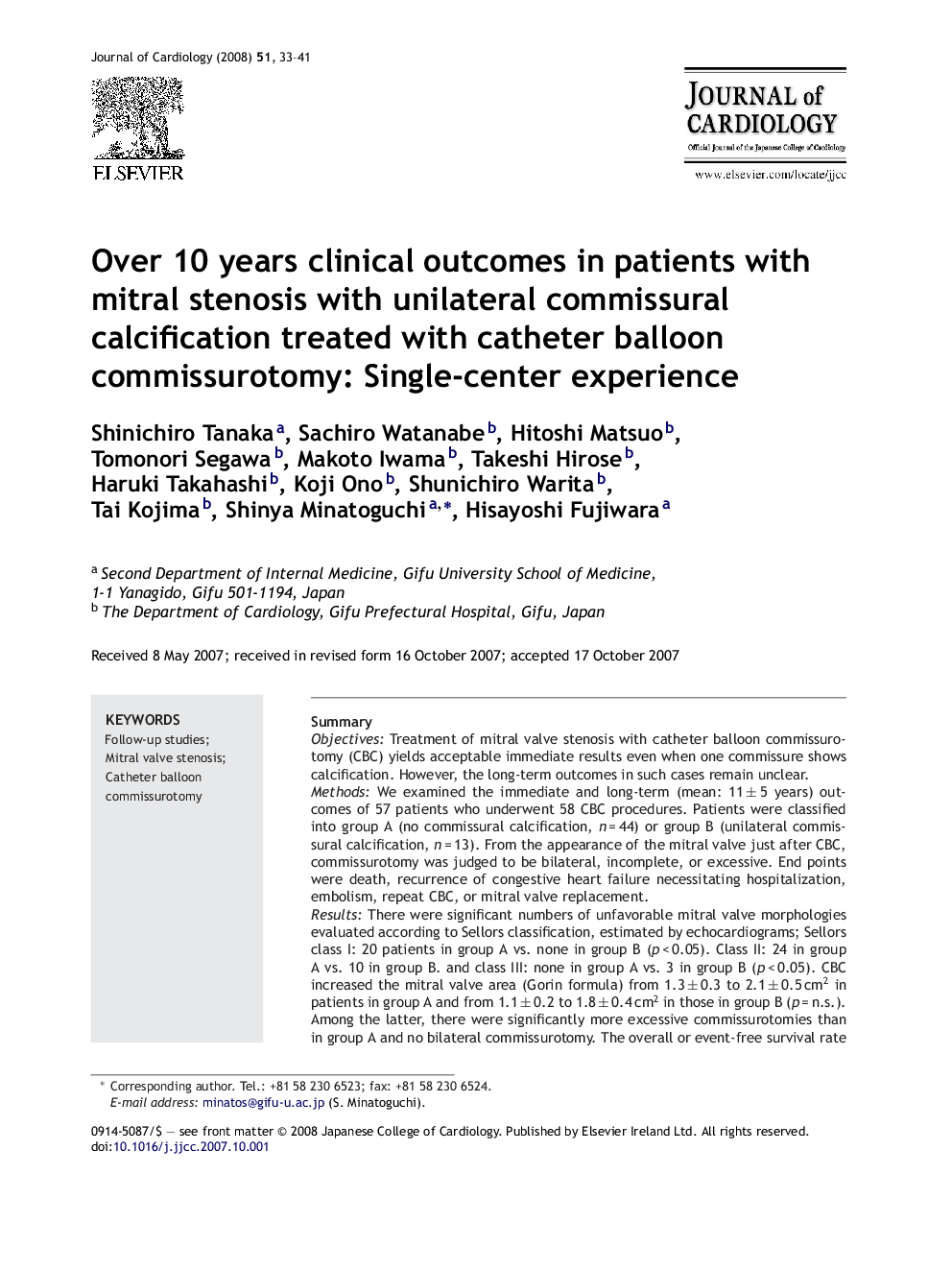| Article ID | Journal | Published Year | Pages | File Type |
|---|---|---|---|---|
| 2963499 | Journal of Cardiology | 2008 | 9 Pages |
SummaryObjectivesTreatment of mitral valve stenosis with catheter balloon commissurotomy (CBC) yields acceptable immediate results even when one commissure shows calcification. However, the long-term outcomes in such cases remain unclear.MethodsWe examined the immediate and long-term (mean: 11 ± 5 years) outcomes of 57 patients who underwent 58 CBC procedures. Patients were classified into group A (no commissural calcification, n = 44) or group B (unilateral commissural calcification, n = 13). From the appearance of the mitral valve just after CBC, commissurotomy was judged to be bilateral, incomplete, or excessive. End points were death, recurrence of congestive heart failure necessitating hospitalization, embolism, repeat CBC, or mitral valve replacement.ResultsThere were significant numbers of unfavorable mitral valve morphologies evaluated according to Sellors classification, estimated by echocardiograms; Sellors class I: 20 patients in group A vs. none in group B (p < 0.05). Class II: 24 in group A vs. 10 in group B. and class III: none in group A vs. 3 in group B (p < 0.05). CBC increased the mitral valve area (Gorin formula) from 1.3 ± 0.3 to 2.1 ± 0.5 cm2 in patients in group A and from 1.1 ± 0.2 to 1.8 ± 0.4 cm2 in those in group B (p = n.s.). Among the latter, there were significantly more excessive commissurotomies than in group A and no bilateral commissurotomy. The overall or event-free survival rate during the follow-up of group B showed a lower tendency than in group A (overall: group A: 86.2% vs. group B: 84.6%, p, n.s. event-free: 56.8% vs. 46.2%, respectively, p = n.s.). Univariate predictors of all events in group B included post-CBC pulmonary arterial pressure, and the pattern of commissurotomy after CBC (p < 0.05). Excessive commissurotomy increased clinical events some years later, after the procedure.ConclusionsIn this study, involving a small number of subjects, long-term outcomes of patients with unilateral commissural calcification receiving CBC showed no significant difference as compared to those with commissural calcification absence. However, it is necessary to perform careful follow-up of CBC patients with unilateral commissural calcium.
